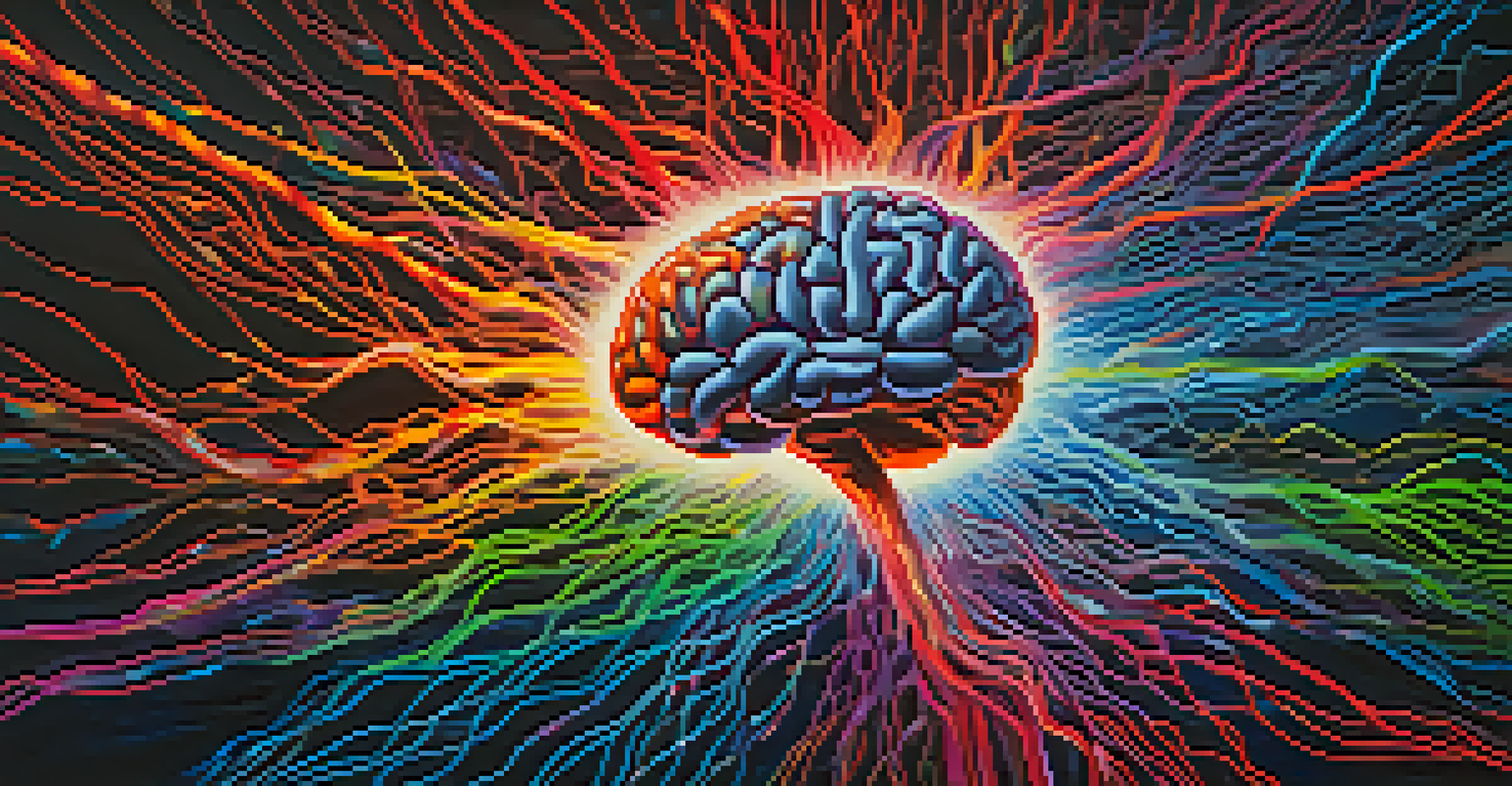Hallucinogens: A New Paradigm in Psychotherapy Training

Understanding Hallucinogens and Their Impact
Hallucinogens are substances that alter perception, mood, and cognitive processes. Common examples include psilocybin, found in magic mushrooms, and LSD. These compounds have been used for centuries, often in cultural and spiritual contexts, but their therapeutic potential is now gaining attention in modern psychology.
The greatest discovery of my generation is that a human being can alter his life by altering his attitude.
Recent studies suggest that hallucinogens can foster profound psychological insights and emotional breakthroughs. This has led to a renewed interest in their application within therapeutic settings, where traditional methods sometimes fall short. The idea is not to replace current practices but to complement them, offering new tools for healing.
For instance, a patient struggling with anxiety might find that a guided session with psilocybin helps them confront deeply buried emotions. This experience can serve as a catalyst for change, allowing for deeper exploration in traditional therapy sessions that follow.
The Science Behind Hallucinogens in Therapy
Research into the effects of hallucinogens is revealing how they interact with the brain. These substances can promote neuroplasticity, which is the brain's ability to reorganize itself by forming new neural connections. This is particularly beneficial in treating conditions like PTSD and depression.

Studies have shown that hallucinogenic experiences often lead to significant reductions in symptoms for patients. For example, a study on psilocybin for depression found that participants reported lasting improvements in mood and outlook, even months after treatment. This suggests that the effects may extend beyond the immediate experience.
Therapeutic Potential of Hallucinogens
Hallucinogens like psilocybin and LSD are gaining attention for their ability to foster psychological insights and emotional breakthroughs in therapy.
Moreover, these substances can create a sense of unity and connection, not just with oneself but with others and the universe. This aspect can be particularly therapeutic, helping patients feel less isolated in their struggles and more connected to the world around them.
Training Therapists to Use Hallucinogens Responsibly
As interest in hallucinogen-assisted therapy grows, so does the need for proper training. Therapists must not only understand the pharmacology of these substances but also the ethical and legal implications of their use. This ensures that patients receive safe and supportive care during their sessions.
We are not human beings having a spiritual experience; we are spiritual beings having a human experience.
Training programs are emerging that focus on both the theoretical and practical aspects of using hallucinogens in therapy. These programs often include supervised experiences, where therapists can learn to navigate the complexities of guiding patients through hallucinogenic experiences. This hands-on approach is crucial for building confidence and competence.
Additionally, therapists must develop skills in creating a safe and supportive environment. This includes setting intentions with patients and preparing them for the emotional experiences that may arise. A strong therapeutic alliance is essential to help patients process their experiences effectively.
The Role of Set and Setting in Hallucinogen Therapy
One of the most important concepts in hallucinogen therapy is 'set and setting.' 'Set' refers to the individual's mindset before taking the substance, while 'setting' pertains to the physical and social environment. Both factors can significantly influence the therapeutic outcome.
For example, a patient entering a session feeling anxious or unsure may have a very different experience compared to one who is calm and open. Similarly, a cozy, quiet room filled with supportive staff can help create a safe space for exploration, enhancing the overall experience.
Importance of Set and Setting
The mindset of the patient and the environment in which therapy takes place are crucial in determining the therapeutic outcomes of hallucinogen-assisted sessions.
Understanding this dynamic is crucial for therapists. They must work with patients to prepare their mindset and carefully curate the environment to facilitate a positive therapeutic journey.
Addressing Ethical Considerations in Therapy
As with any emerging treatment, ethical considerations are paramount in hallucinogen-assisted therapy. Therapists must navigate issues like informed consent, patient autonomy, and the potential for misuse. Ensuring that patients are fully informed about the risks and benefits is essential.
Furthermore, therapists need to be vigilant about not exploiting the vulnerable state that hallucinogens can induce. This calls for a strong ethical framework within which therapists operate, prioritizing the well-being of their patients at all times.
Establishing clear guidelines and training on these ethical aspects will help create a safe therapeutic space. It will empower both therapists and patients to engage in this innovative treatment modality responsibly.
The Future of Hallucinogens in Psychotherapy Training
The burgeoning interest in hallucinogens is poised to shape the future of psychotherapy training. As research continues to validate their therapeutic potential, we may see these substances integrated into more clinical practices. This shift could lead to a re-evaluation of how mental health is approached.
Imagine a future where therapists are trained to use hallucinogens as one of many tools in their toolbox. This holistic approach could enable practitioners to tailor treatments to individual needs, potentially leading to more effective outcomes for patients.
Ethical Training for Therapists
Proper training for therapists in the ethical use of hallucinogens is essential to ensure patient safety and effective treatment.
Moreover, increased acceptance and understanding of hallucinogens could reduce stigma around their use, fostering a more open dialogue about mental health treatments. This evolution in therapy could be revolutionary, bridging gaps in traditional methods and enhancing patient care.
Conclusion: Embracing a New Therapeutic Paradigm
In conclusion, hallucinogens represent a new paradigm in psychotherapy training, offering promising avenues for healing that were previously overlooked. As research continues to unfold, it is crucial for therapists to approach this field with both curiosity and caution, ensuring that they are well-prepared.
By integrating hallucinogens into psychotherapy training, we are not only expanding the toolkit available to mental health professionals but also paving the way for more comprehensive and effective treatment modalities. This could lead to significant improvements in patient outcomes and mental wellness.

Ultimately, embracing this new paradigm requires a balanced approach that prioritizes safety, ethics, and patient well-being. As we move forward, the potential benefits of hallucinogen-assisted therapy could transform the landscape of mental health treatment for the better.